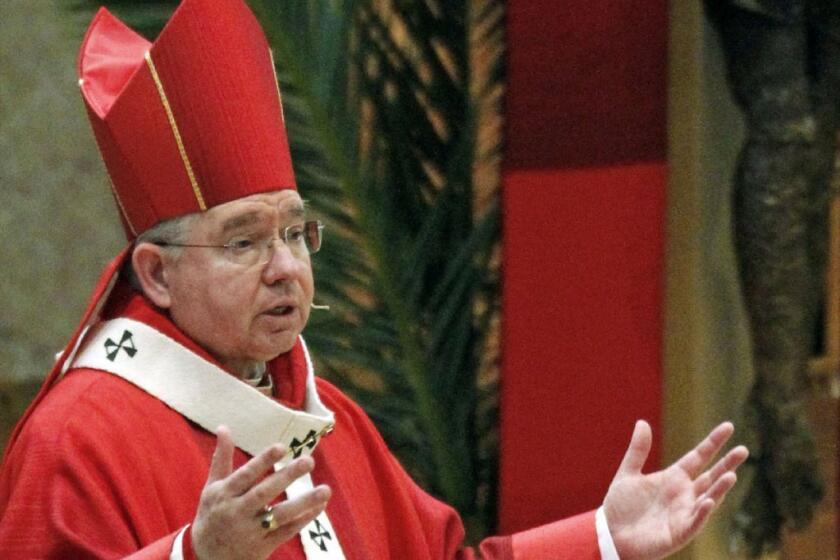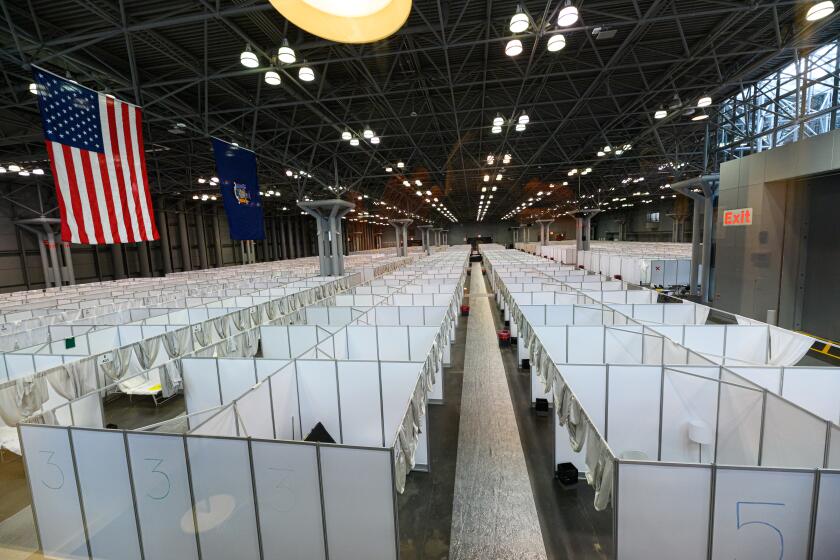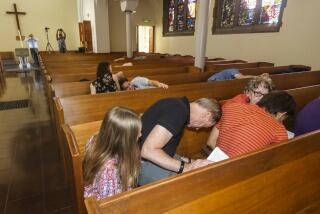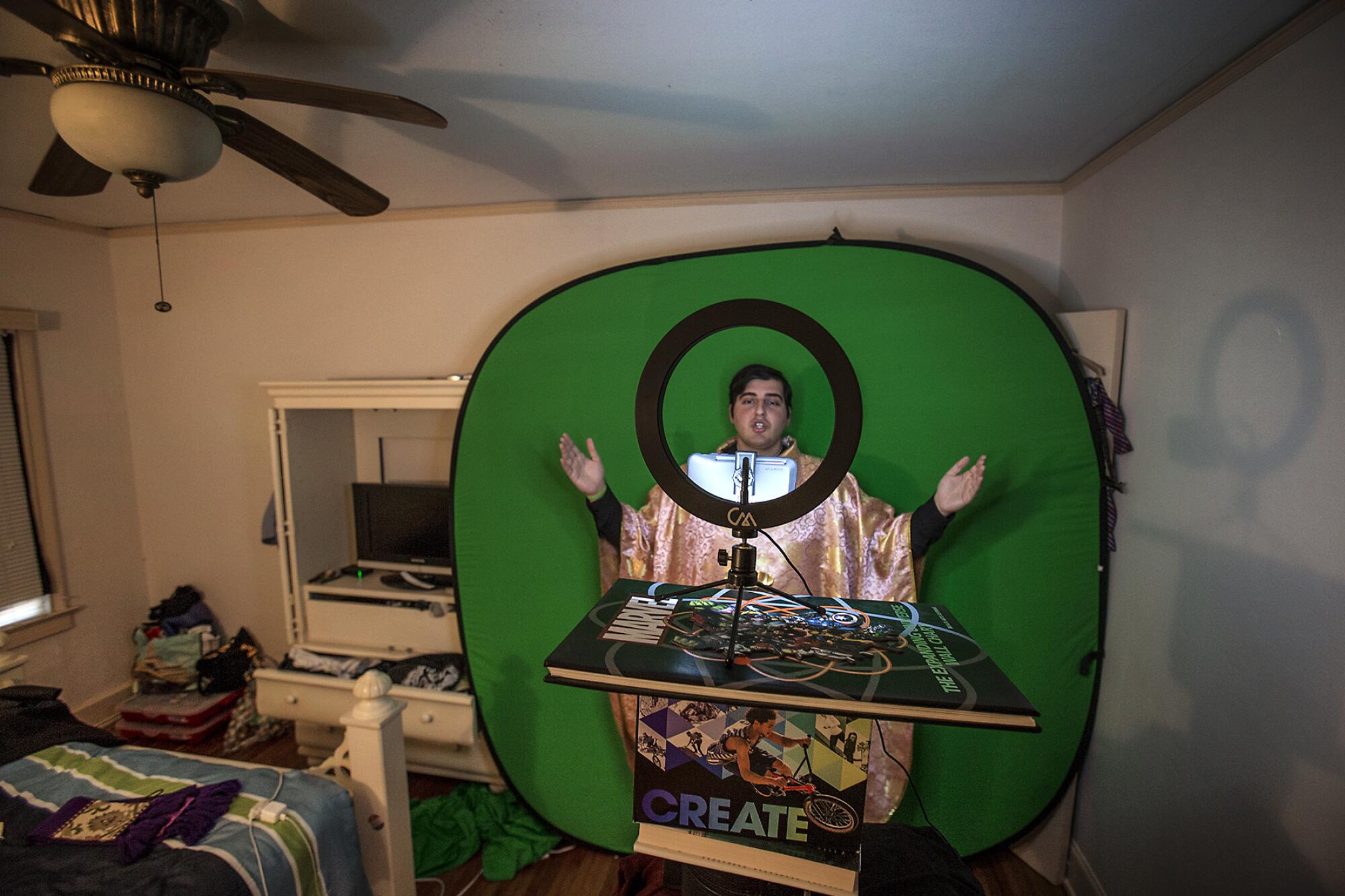
- Share via
CORAL GABLES, Fla. — It was the third Wednesday of Lent, and the Rev. Michael Sahdev couldn’t sleep.
This was supposed to be one of the most important times of the year, when he’d join his flock each day to relive the 40 days Jesus fasted in the desert before they celebrated his resurrection.
Instead, he was stuck in his apartment in khaki shorts and an un-tucked black clergy shirt with the white collar missing. He stress-ate through a big bag of salt and vinegar chips. He tossed in bed. He scrolled through the news.
“Can y’all not sleep either?” he tweeted at 3:50 a.m. to the other Episcopal priests who followed him.
There was too much on his mind.
The parishioner dying of leukemia whom he couldn’t anoint. The 98-year-old who came each week to receive the Eucharist from his hands. His mom, who greeted customers at the kids clothing store in the mall to make ends meet.
“I’m supposed to be there with the people,” he thought to himself. “What am I doing here?”
Social distancing has different meanings. In California, Oregon and many other states, everything “unessential” — including houses of worship — has closed. Many churches, mosques and synagogues have gone online. In Louisiana and Ohio, megachurches have drawn scorn for meeting. Absent across-the-board state orders, counties and cities in Florida have made their own rules.
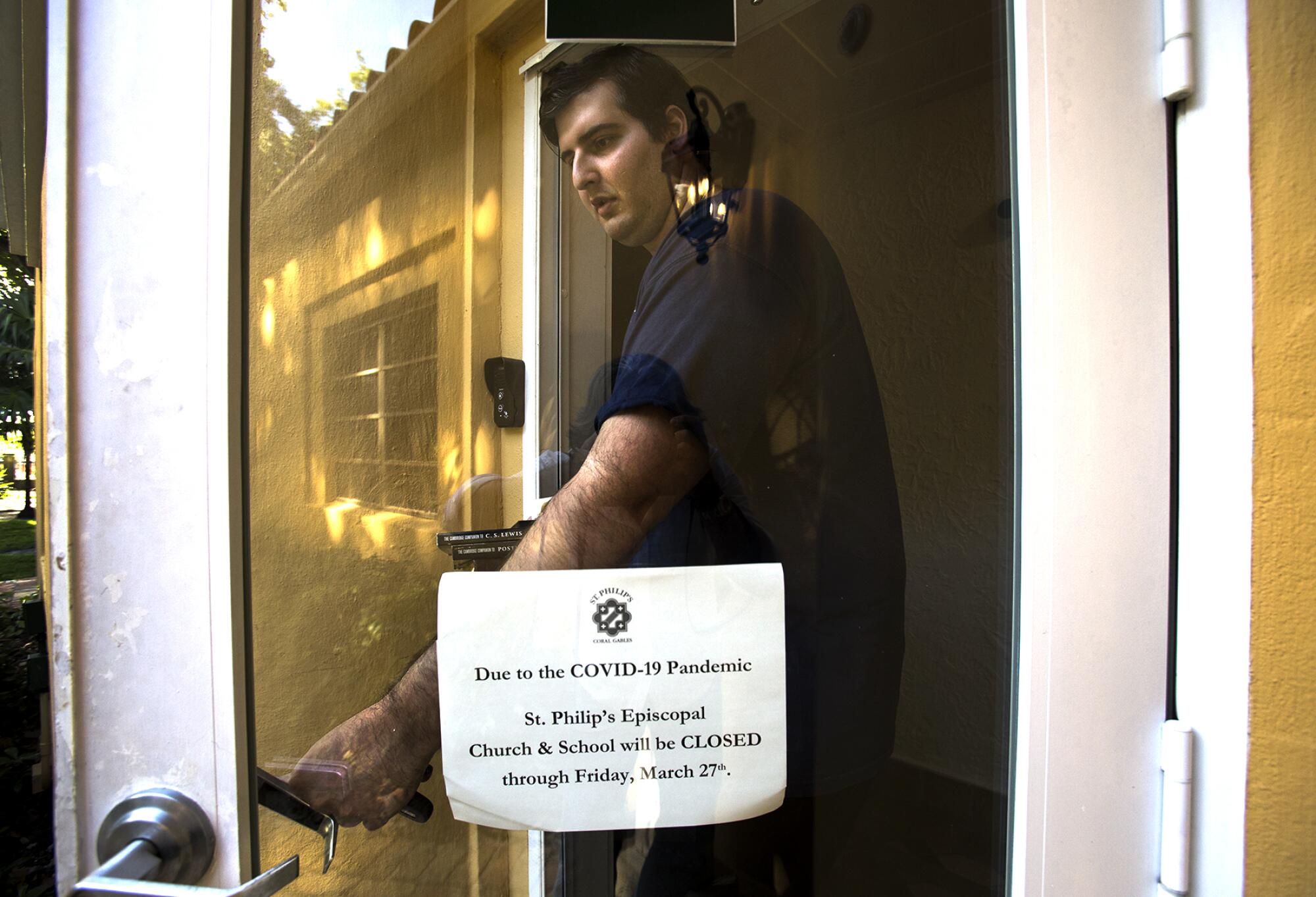
Sahdev’s congregation at St. Philips Episcopal Church in Coral Gables last met at noon on Thursday, March 12. About 20 people came, many of them retirees. They asked for God’s mercy. They received the Eucharist in their palms and on their tongues. They washed their hands and drove home, not knowing when they’d see one another again.
The same went for their priest.
At 28, single and on his first job as an associate rector, Sahdev is torn between his call to minister in a time of need and his desire to stay safe.
“I’m not really worried about myself,” he said recently, navigating his Dodge Charger through the empty street to pick up his last belongings from the office. “But what if I am a carrier? I couldn’t live with myself knowing that one of my parishioners died.”
In this well-heeled city outside Miami, where bankers and lawyers mix with retirees on banyan-tree-lined streets named after cities and regions of Spain — St. Philips is on Andalucia Avenue — the church doors were nearly always open.
No longer.
“Due to the COVID-19 pandemic, St. Philip’s Episcopal Church and school will be closed through Friday, March 27,” said a sign recently taped on the entrance.
Days later, it was changed to Sunday, April 19.
That’s a week after Easter, when President Trump initially proposed easing restrictions so people could worship in “packed churches.” The president later pushed the date to the end of April and predicted “great things” would happen by June.
Sahdev believed it could be much longer before life got back to normal.
“Whenever we actually meet again,” he said. “That will be our Easter.”
In a time of pandemic, religion, the sanctuary for so many in Iraq, has been hit hard. The faithful are live streaming services, praying in private.
A native South Floridian, he was born to a Christian mother and a Sikh father. After dreaming as a kid of being a defensive end in the NFL, he felt as a teen that something was missing and began going to church. He led the youth group for the Episcopal Diocese, which stretches from Key West north past West Palm Beach, before attending Episcopal college in Tennessee and seminary in Virginia.
But nothing in his seven years of training prepared him for this. The nonstop messages from parishioners and nonparishioners alike — in text, on Twitter, on Facebook. The endless group thread on Snapchat with classmates who were now spread across the country as priests, each struggling with the same questions.
He played the roles of friend, therapist, doctor and minister.
“I need prayers,” a parishioner recently wrote in a text, complaining that she couldn’t sleep because of a flaring rash on her legs. “Sorry, I know it’s weird.… The coronavirus has me feeling all kinds of ways.”
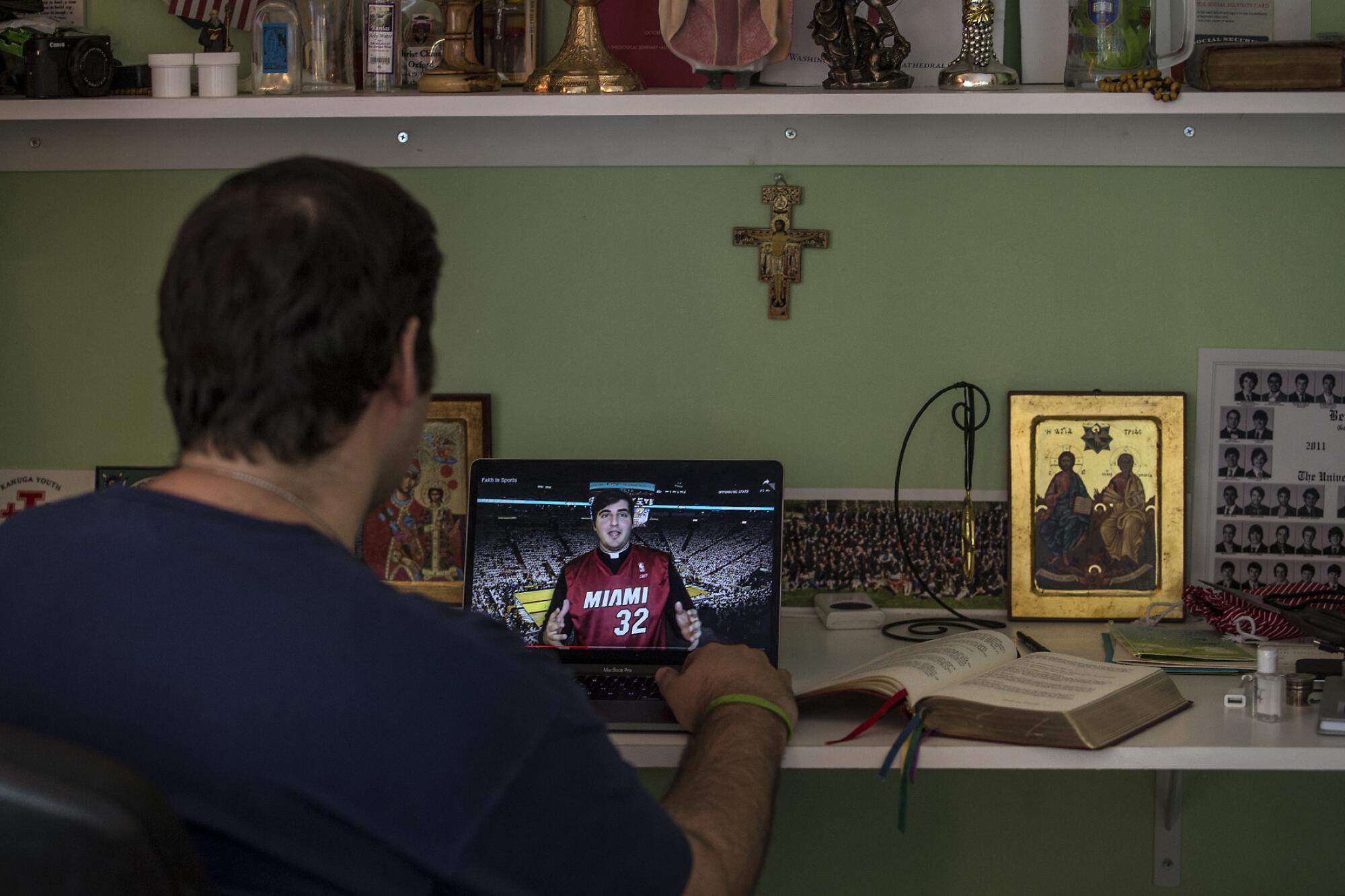
“You are definitely in my prayers but don’t you know it’s probably related to the source of the stress?” Sahdev replied, alluding to fears of the virus. He told her to try Tylenol.
In his room, he stacked theology books and a chalice box under a camera stand and ring light that he faced daily to shoot YouTube videos. He recently posted a “10 minute morning prayer” to “Episcopalians on Facebook,” a group with 34,000 members.
“The church isn’t a building, it is us,” he said in the clip, telling viewers to read the Book of Common Prayer throughout the day. In another video, he sported his Dan Marino jersey, explaining the “faithful moments” of sports to those who missed live games — like the Chicago Cubs winning the World Series after 108 years. “It kind of reminds us of Moses trying to enter into the promised land,” he said, drawing a parallel to the long wait (unlike the Cubs, Moses didn’t get in).
In response, churchgoers flooded Sahdev’s inbox with questions.
“Did God do this?”
“Is he punishing us?”
“Is it the Chinese?”
He shook his head as he replied to them.
“God isn’t out here trying to kill us.”
“Yes, God created us,” he later said in an interview, looking over the messages. “But he also gave us the mind to create medicine, to have doctors, to have science. We can pray, and prayer can move people to take action. But we also have those tools.”
L.A. archdiocese closes all churches in hopes of easing coronavirus danger
The closure of a church means a lot more than locking the doors of a building. At St. Philips, where 250 gather on Sundays, it meant the shutdown of its school, leaving hundreds of kids in online classes and parents without child care. It meant no place for the occasional homeless visitor to sit peacefully under the light of the stained glass before receiving a Publix gift card. And it put the future of the church, which ran on tuition payments and Sunday giving, into question.
Sahdev spent nearly a full paycheck each month on his $1,450 rent. He used the rest of his income on student loans, bills, food and helping his mother.
With barely any money coming into church — and its biggest day, Easter, canceled — he wondered how much longer he’d have a job.
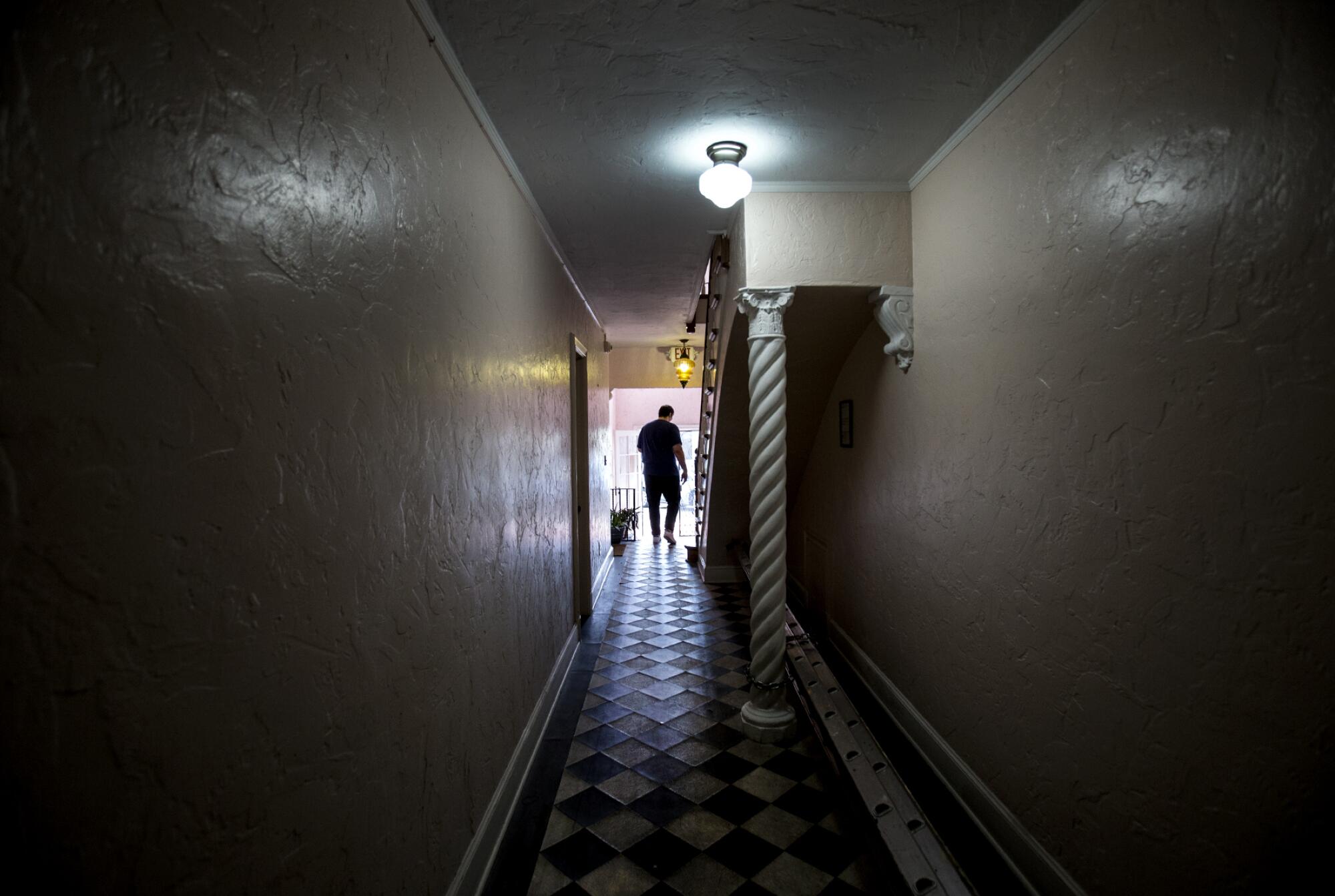
He was the junior priest, one of three total, and the first to go if there were layoffs. But as the only one who was young and single, he also felt he had the greatest responsibility.
“If I can’t help people now, who of us can?” Sahdev said.
The most important part of Episcopal worship is the Eucharist. For Catholics, the wafer and wine transform into the body and blood of Christ. Episcopalians instead believe there is a “real presence” of Christ in them.
Before the church shut its doors, Sahdev walked next to the sacristy, opened a small door in the wall with his sleeve and put his hand into the tabernacle. He pulled out consecrated wine and wafers that were left over from previous Holy Eucharist services to take home.
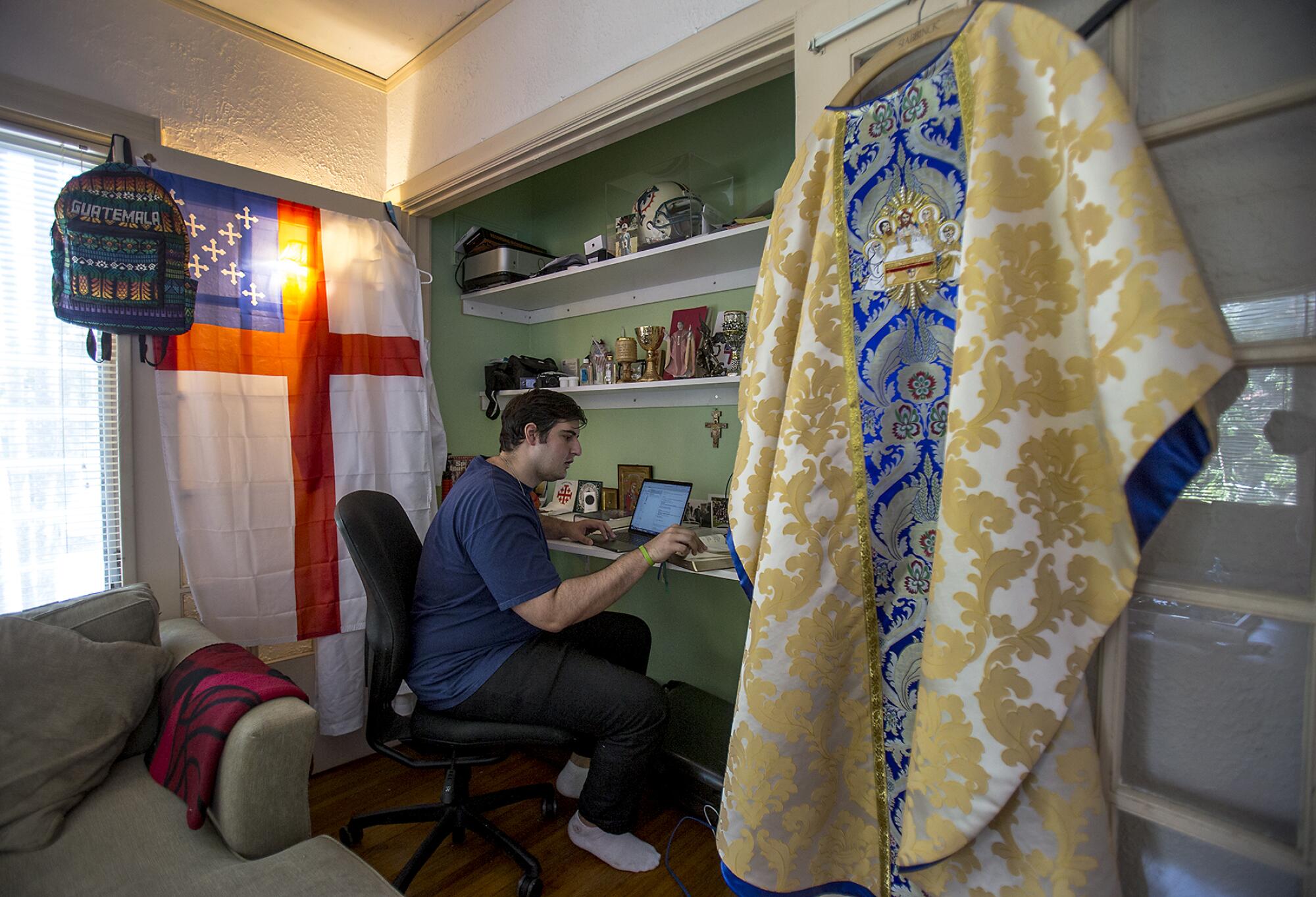
He stored them in his living room in a closet he converted into a desk and bookshelf, where gold-leaf icons of Jesus and Mary sat next to degrees and a football signed by Marino, the retired Miami Dolphins quarterback. On the closet door hung his golden robe, the one he planned to wear for Easter. A large bottle of Germ-X sat on his ottoman, across from a small marquee-like sign on his TV stand. It said, “Bad times don’t last.”
Sahdev devised a plan. He’d deliver the consecrated wafers in Ziploc bags. He’d ask parishioners to put a table outside their door with a plate before going back inside. He’d approach the table, use purple dish gloves to place the wafers down, and back away at least six feet. He’d do the confession of sins, say the Our Father, and pray.
With the number of coronavirus patients around the world growing at a rapid clip, construction of hospitals and hospital beds has also ramped up around the world.
His boss — the rector — advised against it. She questioned if it would cheapen the experience. She asked if it was safe. She wondered if it would set up the wrong standard. The Eucharist was always taken to the sick and immobile. But would healthy parishioners now ask for communion delivery when the pandemic was over?
Still, other churches in the area were making similar moves. Sahdev felt his congregation disintegrating.
“If I was a parishioner, and I didn’t hear or see my church, I’d feel like it had just abandoned me,” he said.
His bishop stepped in last week, banning priests from going door to door.
After giving it some thought, Sahdev decided that was the right call. “I think my rector was wise.”
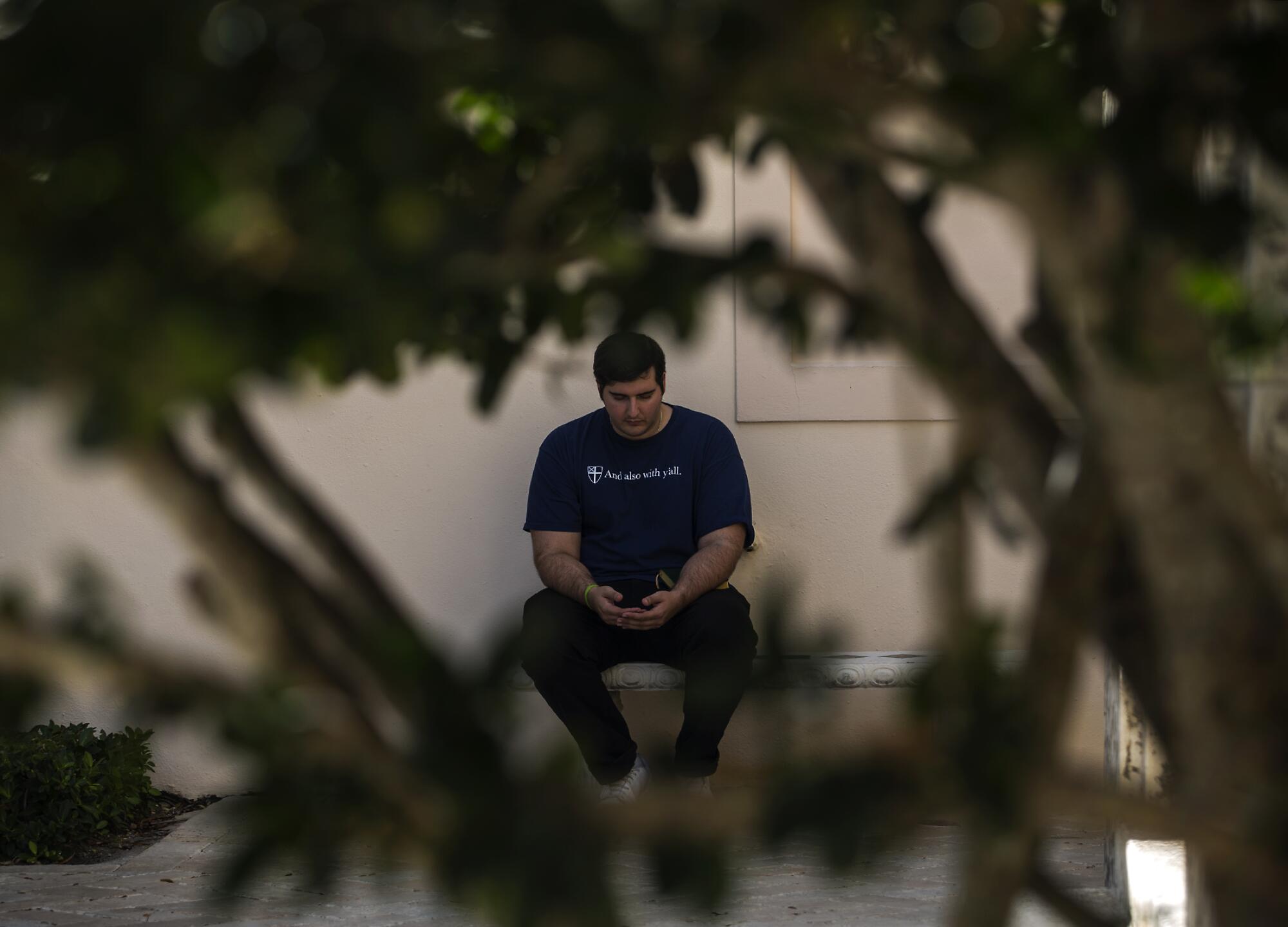
When the church was open, Sahdev had keys to go in any time. Often, he would sit in a chapel to the side of the main altar and pray by himself.
With the church closed, the closest he could come was to sit on a bench outside the door, the one with the COVID-19 sign. He went there on a recent afternoon, under the shade of palm trees and the heat of the slowly setting sun.
He put his head down and paged through the Book of Common Prayer, which listed prayers for healing of the nation and world. He asked for God’s forgiveness, for the end to today’s suffering, and to see his community again.
A voice startled him. About 30 feet away, a parishioner and his 12-year-old son — one off of work, the other off of school — biked through the parking lot the church shares with local tennis courts.
“Father Michael, no loitering!” the dad joked as he slowed down and made a small circle.
The priest shot his head up.
“We liked your videos!” the boy said.
For a few seconds, the three stared at one another from afar, awkwardly lingering. At any other time, they would have walked up to hug and chat, or to pray. Instead, they stood far apart.
Still, it was something for Sahdev.
He smiled.
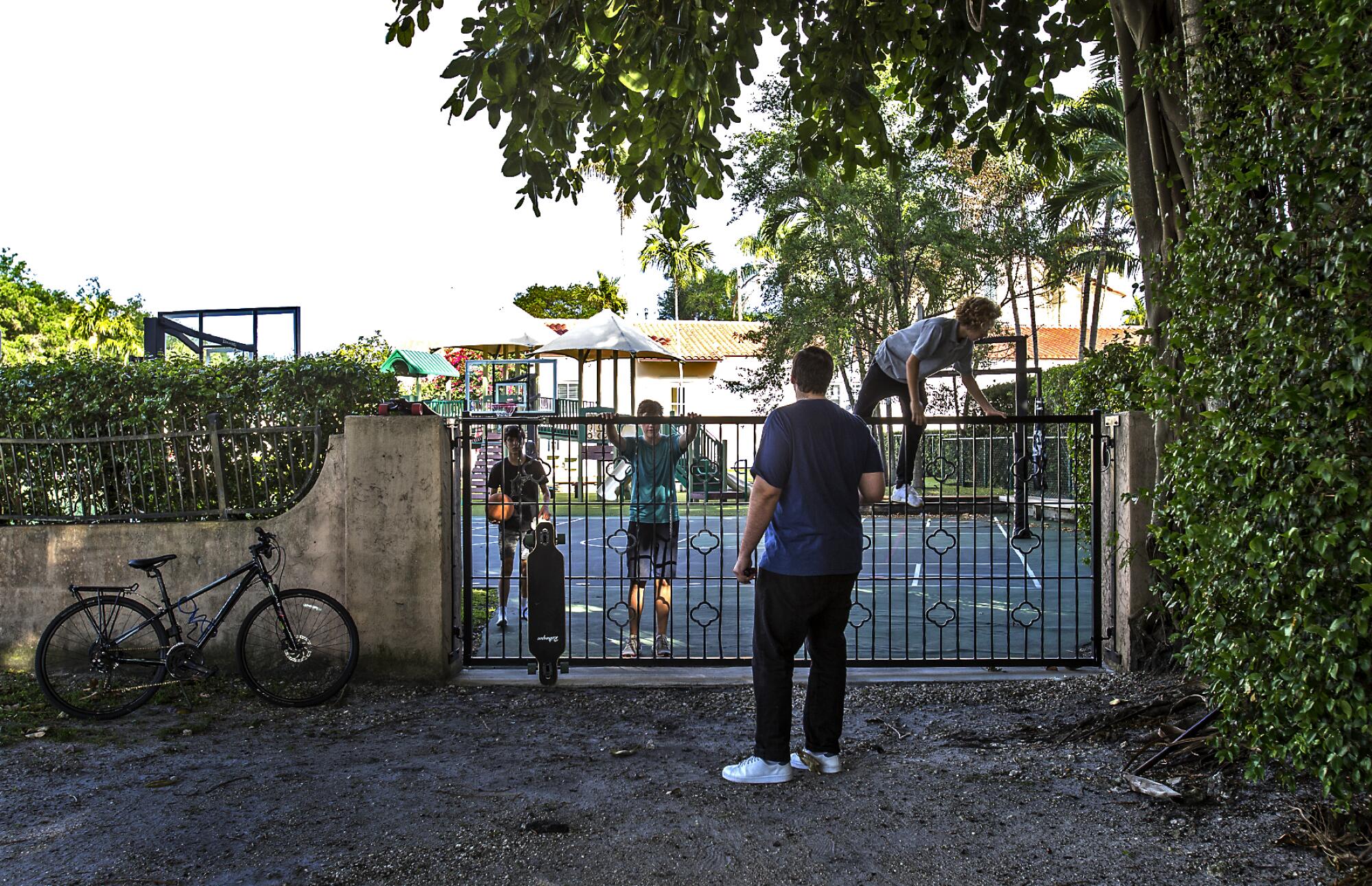
More to Read
Sign up for Essential California
The most important California stories and recommendations in your inbox every morning.
You may occasionally receive promotional content from the Los Angeles Times.


